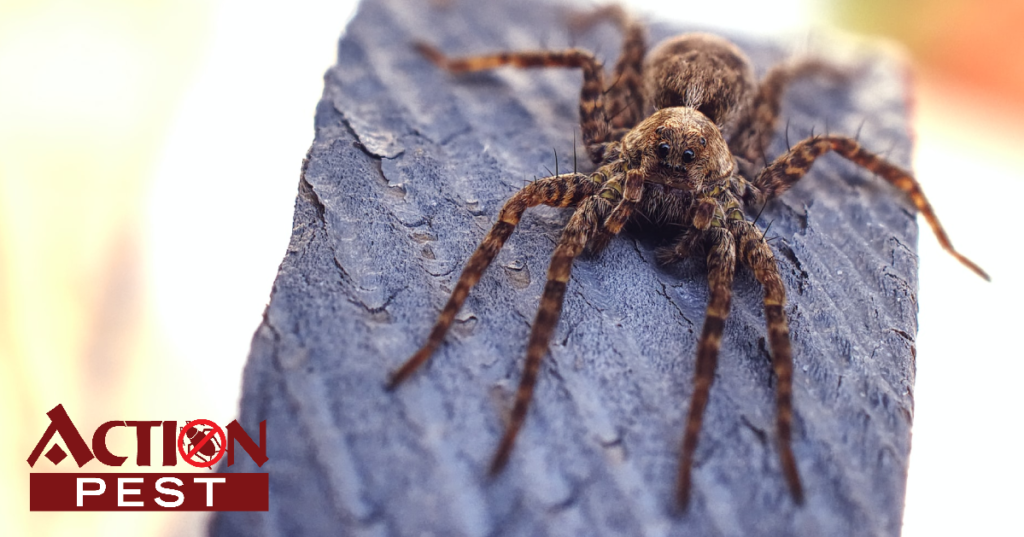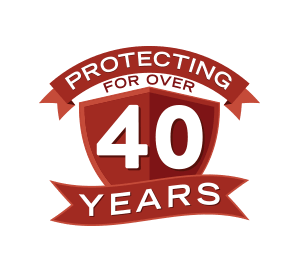
Dock spiders come from the family of dolomedes and prefer living in places where there’s access to water. They are commonly found on docks, boats, boat houses, and even rocks during the mating season. They have evolved over many years to adapt to semi-aquatic life and unlike most spiders, they do not use webs to trap their prey. Dock spiders are also called wharf spiders but are easily confused with wolf spiders, which are dangerously venomous.
So, you’ve come across a giant spider but aren’t sure where it came from? And more importantly, is it threatening? Regardless of the species, it’s always a good idea to call pest control before the spider hides into a crevice or invades your living space.
How Do I Identify A Dock Spider?
It’s not hard to spot these hairy creatures, given their size. They will unexpectedly show up from underneath the docks, around your towel or near the pool. Physically, they have a total of eight eyes layered in two sets. They have a brown-greyish colour and an alternating pattern of light and dark circles on their legs. They also have brown markings on their abdomens. Many dolomedes species are similar and dock spiders are often confused with a close cousin ‘striped fishing spider’ or scriptus native to Canada and US.
Size of a Dock Spider
If you’re confusing a dock spider with another spider, size is a great way to tell the difference. These spiders are roughly the size of your palm, with long legs and a pair of fangs. They are the largest species in Canada and can grow to a size of around 100 mm or 4 inches. A female dock spider is about twice the size of a male spider, but the males outnumber the female population three times over. If you’ve spotted any massive dock spider, it is most likely a female.
Hunting Capability
Dock spiders are also called fishing spiders because of their hunting behaviours. These spiders do not spin webs to catch prey. Instead, they use still water to do the job of the web. A dock spider is covered in waxy hair all over its body that provides the much needed surface tension to run on water and not drown. A dock spider extends its front legs on the water and feels for vibrations caused by a moving prey or an insect that has fallen in the water. The hair plays a large role in detecting these tiny vibrations and the eyes help locate the prey.
Their prey includes insects, tadpoles, and smaller fish. They will chase their prey right away before it escapes, and a dock spider bite is poisonous enough to affect smaller organisms.
Dock Spider vs Wolf Spider
Dock spiders are similar to wolf spiders. They are roughly the same size and share the same dark colours. You can easily tell a dock spider from a wolf spider, because they live in separate habitats. Wolf spiders prefer dark places on land that offer protection and a chance to surprise a passing prey. They rely on the element of surprise and agility to kill their prey. While dock spiders sense their prey.
You can tell them apart visually, by observing their eyes. Wolf spiders have 6 eyes with two large eyes centred on top. Dock spiders have eight eyes, arranged in two rows.
Controlling Dock Spiders
You can adopt some of these practices to keep dock spiders away from your boat or house.
- Washing the docks regularly keeps any kind of insects away from your docks and in turn deters spiders from looking for prey underneath the wood.
- Spraying insecticide near docks or places you’ve spotted dock spiders can keep them away for a long time.
- Layering bleach on the entry points of your boat can effectively deter a dock spider from getting into your warmer boat.
- Using traps around the area can help stop these spiders from reaching other places and multiplying.
Before the situation gets out of hand, call some professionals that can save you from days of paranoia if the spider gets away.
Spider Control and Pest Removal at Your Doorstep
Handling a situation involving large spiders can be dangerous. These spiders can enter your home, boat or docks in search of prey or for hibernating during winters.
Getting up close with them without an understanding of their species means putting yourself in harm’s way. It’s always great to keep an eye out for spiders in your backyard and pool, with kids around.
If you happen to spot any spiders inside or around your house or docks, do not hesitate to call Action Pest for a quick and professional relief.
Call our helpful staff, available throughout the week, for your needs.
FAQ
Are dock spiders poisonous?
Dock spiders are poisonous, but their venom rarely affects humans. The most it can do is irritate sensitive skin.
Do dock spiders bite?
Dock spiders do not bite humans. Their diet mostly includes small fish and water dwelling insects. In cases where these fishing spiders have bitten humans, is when they felt threatened or mistakenly crawled under clothes.
What do dock spiders eat?
A dock spider can eat anything that produces tiny vibrations in water, like an insect near the stream, tadpoles, frogs and fish. These spiders are capable of eating prey 5 times their size.
Are dock spiders harmful to humans?
Dock spiders are not harmful to humans, but they are capable of penetrating human skin and delivering venom. The venom is fairly weak and not capable of numbing the skin.
How big do dock spiders get?
A female dock spider can grow twice the size of the male dock spider. The largest dock spiders have sizes around 4 inches and can cover your palm.
Do canadian dock spiders bite?
Dock spiders are native to Canada and their diet does not include human flesh. They do not bite humans, but are capable of penetrating the skin with their fangs.
Where do dock spiders live in Canada?
Dock spiders like to live near a stream, lake or a freshwater source. They rely on water insects and frogs for their food. They can reach land or warmer places for hibernation or breeding.
What is Canada’s biggest spider?
The dock spider or fishing spider is the largest spider species in Canada. They can grow to a size of around 4 inches.
How do you control dock spiders?
Dock spider population can be controlled by removing loose rocks that produce crevices and keeping your plants trimmed to avoid them nesting around your house. It is also a good idea to check any standing water, like your swimming pool.






